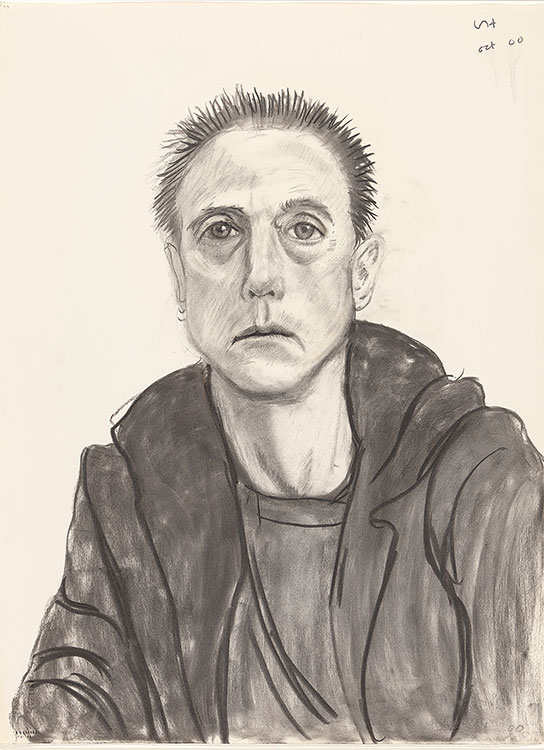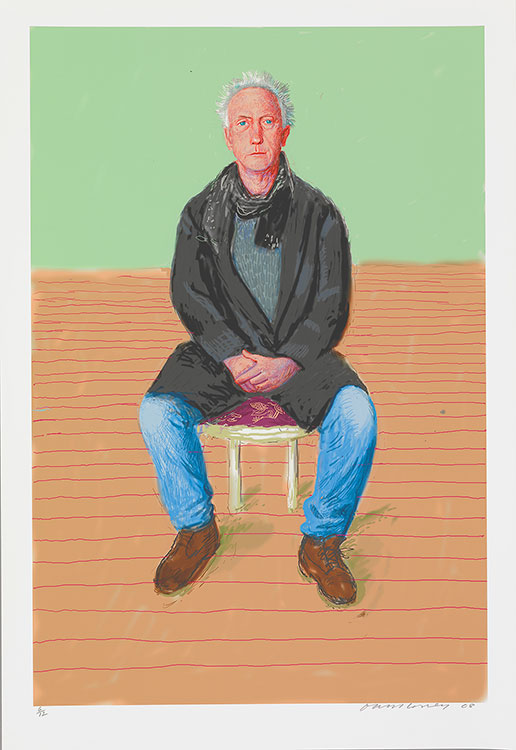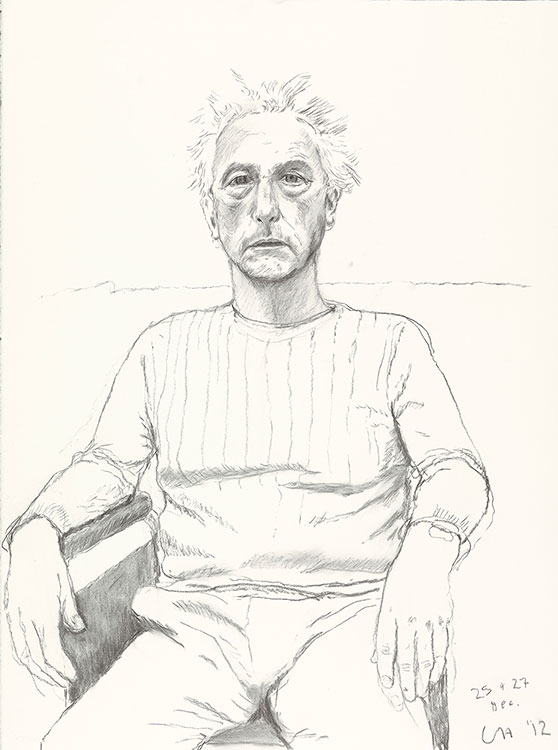Maurice
The lifelong friendship between Hockney and master printer Maurice Payne began in London in the mid-1960s, when they worked together on the etching suite Illustrations for Fourteen Poems from C. P. Cavafy (1967). They continued to collaborate on significant print projects until the late 1970s.
In 1998, after a hiatus of twenty years, they again worked together when Maurice set up a print studio in Los Angeles. To encourage Hockney, he would take pre-prepared etching plates up to the artist’s house in the Hollywood Hills, then bring them back down to the printing press he had set up in Hockney’s studio in West Hollywood. Working from life, Hockney drew still lifes and portraits of friends. These intimate drawings created in the domestic setting of his home contrast with the monumental landscapes of the American West he was painting in his studio at the time.
Artwork: © David Hockney
Maurice with Flowers

David Hockney
Maurice with Flowers, 1976
Lithograph
The David Hockney Foundation
© David Hockney
Photography by Richard Schmidt
Maurice, 1998

In their print projects, Maurice Payne encouraged Hockney to work in innovative ways. Here, the artist’s characteristic line drawing, so well suited to the etching technique, is combined with the use of unconventional tools such as a wire brush to create texture and volume. Print production was a process of discovery for both Payne and Hockney. "We learned as we went along," the master printer later revealed. The expressive mark-making, as well as the sitter’s full-frontal pose, suggests the influence of Van Gogh’s portraits.
David Hockney
Maurice, 1998
Etching
The David Hockney Foundation
© David Hockney
Photography by Richard Schmidt
Maurice Payne. Los Angeles

In his book Secret Knowledge: Rediscovering the Lost Techniques of the Old Masters, Hockney describes the process of using a camera lucida:
Basically, it is a prism on a stick that creates the illusion of an image of whatever is in front of it on a piece of paper below. . . . When you look through the prism from a single point you can see the person or objects in front and the paper below at the same time. . . . You must use it quickly, for once the eye has moved the image is really lost. A skilled artist could make quick notations, marking the key points of the subject’s features. . . . After these notations have been made, the hard work begins of observing from life and translating the marks into a more complete form.
David Hockney
Maurice Payne. Los Angeles. 11th September 1999, 1999
Pencil on paper, using a camera lucida
The David Hockney Foundation
© David Hockney
Photography by Richard Schmidt
Maurice Payne, October 9, 2000

David Hockney
Maurice Payne, October 9, 2000, 2000
Charcoal on paper
Collection of the artist
© David Hockney
Photography by Richard Schmidt
Maurice Payne, 2008

New digital technology sparked creative experiments in Hockney’s work. In 2008, he began making computer drawings using Photoshop, as in this portrait of Maurice, one of a series of portraits of family, friends, and colleagues drawn in his large studio in Bridlington, Yorkshire. By then, Hockney felt that computer software had advanced enough to keep up with the artist’s hand. He particularly admired the speed with which he could draw with color “directly in a printing machine,” as he described it, unlike the slow process of swapping brushes with oil or watercolor.
David Hockney
Maurice Payne, 2008
Inkjet-printed computer drawing on paper
The David Hockney Foundation
© David Hockney
Photography by Richard Schmidt
Maurice Payne, 25 and 27 December 2012

David Hockney
Maurice Payne, 25 and 27 December 2012, 2012
Charcoal on paper
The David Hockney Foundation
© David Hockney
Photography by Richard Schmidt
Maurice Payne, 16 April 201

David Hockney
Maurice Payne, 16 April 2013, 2013
Charcoal on paper
The David Hockney Foundation
© David Hockney
Photography by Richard Schmidt
